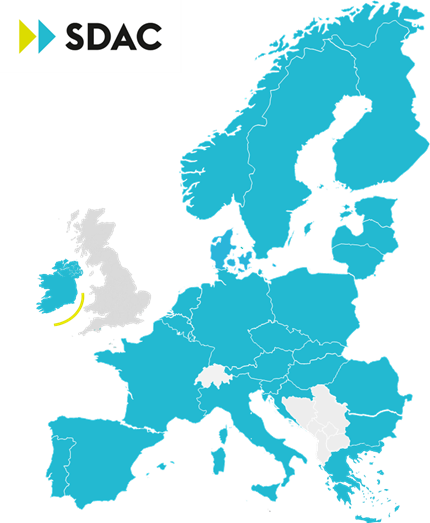30 September 2025
The daily allocation of Belgian cross-border capacities has successfully switch to a 15-minute time unit
BRUSSELS | On 30 September 2025, Single Day-Ahead Coupling (SDAC) successfully transitioned to a 15-minute granularity for cross-border capacity allocation across Europe. This major upgrade replaces the previous hourly resolution and has a direct impact on the Belgian borders, aligning the day-ahead processes with the 15-minute resolution already used in intraday trading and imbalance settlement. This change is an important step forward for flexibility. It will also better support the integration of renewables and help Belgian market players to reduce the risk of imbalance. Belgium will now have 96 separate day-ahead prices per day, one for each 15-minute period, instead of the previous 24 hourly prices.
Context
The European energy market is undergoing a major transformation with the implementation of a 15-minute Market Time Unit (MTU) in Single Day-Ahead Coupling (SDAC). This initiative aims to improve market efficiency, better integrate renewable energy sources, and improve grid stability across Europe. This development is anchored in the European Union's legal framework and obliges all transmission system operators (TSOs) and Power Exchanges (Nominated Electricity Market Operators – NEMOs) in EU Member States to adopt this measure to harmonise market operations and ensure greater consistency and efficiency for European electricity balancing processes.
Successful implementation
The successful switch to a 15-minute MTU has occurred on 30 September 2025 with a first delivery date of 1 October 2025. This change affects all bidding zones and borders included within SDAC (see diagram below). The implementation involves significant updates to the European day-ahead market coupling central algorithm, to adapt to the new time resolution and ensure the efficient mechanism. Regional and local systems of all TSOs and NEMOs of Europe were also upgraded. Elia closely coordinated with the two operational Belgian NEMOs—EPEX Spot and Nord Pool—to implement the 15-minute market resolution in Belgium, but also with other TSOs and NEMOs across Europe to test systems and adapt operational procedures accordingly.
The advantages of adopting a 15-minute time unit
This measure will allow for a better integration of intermittent renewable energy sources. This is because finer trading granularity allows for more accurate planning and allocation of variable renewable energy, such as wind and solar, whose generation level fluctuates on a continuous basis and not with hourly blocks. In addition, it will enhance the optimisation of flexibility by enabling both small and large consumers, as well as batteries, to participate more efficiently in the day-ahead market. By allowing them to estimate their needs at a 15-minute granularity—rather than relying on less suitable hourly values—they can better optimise their positions in response to market signals.
The change further contributes to network stability. A finer temporal resolution allows for better forecasting and balancing of supply and demand, reduces imbalances, and strengthens overall grid reliability.
Finally, harmonising the day-ahead market resolution with the 15-minute granularity used in intraday and balancing markets will help reduce the frequency deviation phenomena typically observed at fixed hours. These deviations are often caused by large generation units attempting to comply with hourly market obligations, creating important step changes in their schedules.
How does the SDAC 15-Minute MTU work?
The SDAC Market Coupling Mechanism integrates national day-ahead electricity markets across Europe (27 countries) into a single and efficient market. It allocates available capacity between different countries through a common algorithm, Euphemia, which determines electricity flows and prices, based on supply and demand. The objective is to strike a balance between lowering prices for consumers and ensuring sufficient revenues for producers—enabling them to invest in cleaner and more efficient energy sources. Until 30 September 2025, the standard market time unit in the SDAC was one hour. The move to a 15-minute MTU means that electricity will now be sold, exchanged and scheduled four times per hour. Market participants can now make bids for the purchase or sale of electricity every 15-minute time unit. Prices will be calculated separately for each 15-minute period, more accurately reflecting supply and demand conditions.
Consistency with balancing markets
The new mechanism aligns with the reforms of the European balancing market, where imbalance regulations moved to a 15-minute resolution. This synchronisation allows deviations from forecasts to be corrected more quickly, which improves the reliability of the system.

Press releases
-
The daily allocation of Belgian cross-border capacities has successfully switch to a 15-minute time unitPDF - 331.13 KB
-
L’attribution journalière des capacités transfrontalières belges passe avec succès à une granularité de 15 minutesPDF - 350.94 KB
-
Dagelijkse toewijzing van Belgische grensoverschrijdende capaciteiten succesvol overgeschakeld naar tijdseenheid van 15 minutenPDF - 333.63 KB


